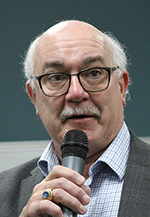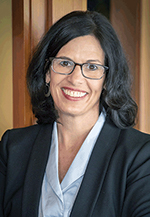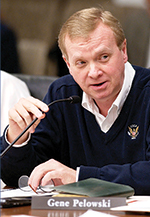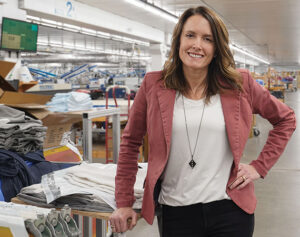State lawmakers have their hands full this year. From COVID relief funding and remote committee hearings to equitable broadband and budget negotiations, the 2021 legislative session is perhaps more of an uphill climb than other years.
Manufacturers — who are also dealing with COVID on top of workforce issues — have a vested interest in the session’s result.
Jim Girard, a lobbyist who works on behalf of Enterprise Minnesota, led a Q&A session with key lawmakers — Rep. Gene Pelowski, DFL-Winona; Rep. Barb Haley, R-Red Wing; and Sen. David Tomassoni, R-Chisholm — in which they discussed concerns about, and hopes for, the 2021 legislative session.
What has been COVID’s impact on manufacturers and on our state’s economy? What will its impact be in the future?
Gene Pelowski: If we take a look at the economic forecast we got last March toward the end of session, we were $4 billion in the hole. Then we got another economic forecast in December and we were plus $641 million. Whatever’s happening with COVID and the pandemic, our ability to track it is, shall we say, a bit erratic. But the interesting part of it is that it didn’t get worse; it got better. Now the last few small economic forecasts we’ve had have also been in the positive. So, I’m more confident that the economy is recovering during this process than I was a year ago, and I am very hopeful that this latest economic stimulus package by the federal government will also have a huge impact.
We’re getting some of the effect of this $4 billion that’s coming into Minnesota from the feds right now, and I’ll give you one example. Winona State University was running an $8 million deficit all by itself because of COVID and declining enrollment. Because of this latest economic package and the $300 million that’s going just to higher ed, Winona State alone is going to get about $9 million. St Mary’s University is going to get about $2.9 million. My tech college is going to get about $1.5 million. Those dollars would be bigger than anything we could provide at the state level during this budget cycle. So, I think our current budget cycle is going to be heavily impacted by this latest round of federal money.
Barb Haley: My personal focus in the beginning was getting people open and working out the bumpiness of who was essential and who wasn’t. Once we got beyond that, things quickly turned around to the positive, I think, for a lot of manufacturers. The common theme I keep hearing is “innovate and pivot,” and people seem to have been able to do that fairly well. Their business is rebounding, but right now we’re back to the workforce challenge.

David Tomassoni: When COVID hit, three of our six taconite plants just shut down. We had a whole bunch of people out of work, and they’ve all since come back. One discouraging thing I heard the president say is that COVID’s going to get worse before it gets better; 1918 was the last time we had a pandemic, so this is all new ground. I think we’re learning something new every day.
How will the legislature get its work done this session given COVID-related gathering restrictions?
Barb Haley: Our chief job is to balance this budget, and the demands COVID has placed on every area of the budget — whether it’s education or health and human services, etc. — puts us in a tough position. There’ll be difficult decisions ahead. The priorities really are the same things we’ve been saying all summer and fall: get us out of COVID, get people back to work, support small businesses, get our kids back in school, and ramp up this vaccine rollout — all those are so tightly intertwined in getting this economy back on track.
Let’s talk about the Growth Acceleration Program, or GAP. A few years ago, the program had a funding level of roughly $800,000. This year it’s been at $400,000. As you know, GAP has been used to help small- and medium-sized manufacturers become more efficient, better utilize their facilities and hire more people. What do you think the prospects are for maintaining and even increasing GAP funding during this tough budget session?
Gene Pelowski: These types of budgets may fare better this session because of the impact of the federal stimulus. When you’re looking at $300 million for higher ed, $588 million for K-12, and $400 million for broadband from the federal government over six years, that offers huge budget relief. That should allow us to say, “We can have more of an impact at the state level by investing in this [GAP].” Which is a relatively small amount in our budget than it would be if we hadn’t had the federal stimulus. And if there’s another Biden one coming, we may be in a really unique situation by the end of session, which I had no way of predicting a year ago.

Barb Haley: My bias is always toward programs like GAP because it has a proven outcome, and they’re targeted. I frequently say that I do not like spending from the government. That is what I call spray and pray. I like targeted programs that we know where our need is. We know it’s in manufacturing and health care and IT. Let’s focus the money on where the need is, and I think we can even get more targeted than we’ve been in the past. The Growth Acceleration Program has a proven outcome of producing jobs and helping small businesses and manufacturers succeed. And that lifts up our whole economy. So, this is the type of thing that I like to support, and I think that the legislature as a whole needs to do more of this.
Two issues that are intertwined are workforce shortages and technical school education. Bolstering education numbers would go a long way to solving workforce issues, but technical college enrollments are lagging. How can we find a solution to these intertwined issues?
David Tomassoni: We should focus on making sure these young kids have the option at least to be able to come out of high school at 18 years old and get a job. I can tell you about several different kids who went to school with me and graduated the same year I did who have already retired because they went to work in the mines at 18 years old. So, there’s a definite history of this being a successful way to go.
Gene Pelowski: Every Minnesota high school senior should have the option of graduating not just with the traditional diploma but with an employable skillset. We recently had a hearing at the tech college in Winona where a bill that we just heard last week in my committee was presented to the biggest group we had out of all the hearings over those three days in southeastern Minnesota. The bill would recreate licensure and certification for what we used to call industrial arts teachers, which we now want to call industrial technical teachers.
Thirty years ago, it was common to graduate in automotive, carpentry, electrical, welding, all of that at the high school where I taught for 37 years in Winona. We had nine industrial arts teachers. We’re down to one. When he retires, you can’t replace him because there are so few. Now, I’ve spoken to the Minnesota Chamber and my local chamber and an array of business groups and they’re all for it. I’ve asked them, “Would you donate equipment?” “Yes.” “Would you have internships?” “Yes.” And their only comeback is, “We’d like an employable individual to graduate from high school.” And I think that’s a fair trade.
Barb Haley: I’m old enough to remember when we all worked during high school; even in middle school I detasseled corn. Somehow that went away, and kids don’t have that exposure to work anymore. We’ve got to eliminate the barriers to that. We’ve tried, for example, to get schools that have these construction programs to build small houses, but we’ve got a lot of restrictions that don’t provide or enable kids to get on a job site to experience things like that.
A couple of bills that I co-authored such as the Youth Skills Training Program have been wildly successful. We need to do more of that because it allows kids to get exposure to a manufacturing environment while they’re 16 and 17. Obviously we want kids to be safe, but let’s give them an opportunity to see what it’s all about. That then will translate to having their parents understand what it’s all about and will help us get rid of some of the stigma.
I also think we have to connect the dots with our high school counselors. We don’t have enough high school counselors, but we also don’t have enough of them who are familiar with the manufacturing setting, so they can’t advise kids on what it looks like. We’re still on this traditional path of telling kids they have to go to a four-year school, and part of that is we’ve got counselors who have more experience with liberal arts than they do with the hands-on trades.
David Tomassoni: I attended a bonding tour once at one of the technical colleges in western Minnesota, and we were touring the diesel mechanic program. I asked the instructor how many kids he had, and he said he had 200. And I asked, “Are they all going to get jobs?” He said, “If I had 400, they could all get jobs.” And so, it’s one of those kinds of things that maybe it’s incumbent on the industries themselves to let kids know what’s available and out there.
What’s your assessment of the state of manufacturing in your districts?

Gene Pelowski: We’ve seen an evolution of manufacturing. I have not had any closures; I’ve had the opposite happen. I’ve had more things opening. But the one constant we always have is that we need skilled employees. So, we’re on the uptick here. We’ve got a whole slew of graduating seniors every year from our high schools. We’ve got to give them a skillset so they can be employable at 18 and go into that workforce.
Barb Haley: In Red Wing we often talk about Winona because Gene and I share the same Minnesota State College Southeast, which has Winona and Red Wing campuses. So, we’re jealous of Winona because they’re a number of years ahead of us. For a time, some of our manufacturing skills training programs moved from the Red Wing campus to the Winona campus. And that was hugely disappointing to our community. So, we’ve been fighting our way back to get some attention from the system.
Our folks here have done a really great job of that. Our manufacturers have told us that they have people who they want to up-skill and re-skill — and they’re willing to hire people without any previous experience and do the training. But traveling to a Minnesota State System in Winona or up to Eagan or St. Paul is too far. So, we need the programs right here in Red Wing. Thankfully, we’re a community that does a really good job of bringing people together to solve a problem. We’ve been successful. Here at Southeast Red Wing, we’ve received a couple of jobs skills training grants, and some National Science Foundation grants. We’re launching a new mechatronics program. You have to have the training local in order for it to benefit a manufacturer. That new mechatronics program is really going to help our local manufacturers.
What are your top priorities for the legislative session?
Barb Haley: We cannot increase taxes on small businesses in this COVID environment. And we still have to look at the business competitiveness and the environment in Minnesota. We have to keep energy costs low. We’ve got to look at our tax structure. I think it’s got to be revamped because, if we don’t keep the environment competitive to build and grow a business here, it’s not going to matter if we don’t have the workers. Companies will migrate out, and that’s a particularly important statement in border communities like mine in Red Wing. Businesses can move right across the river to Hager City. And we hear that from our border communities.
Gene Pelowski: We had a hearing Wednesday on broadband. It was all about the impact of COVID across the state and the inequities of having a system of broadband that isn’t fair. This is the highway of information of the 21st century. It has to be invested in across the state so that it’s fair, so that everyone has the same upload and download, and so that we’re going to make sure we’re going to keep it. The 21st century is going to demand that information highway be fair for everyone. And the thing I think we’re learning more and more about is that our electric co-ops are now using their infrastructure to carry broadband to southeastern Minnesota. We’ve started to do some things. We just haven’t finished them.
…
Featured story in the Spring 2021 issue of Enterprise Minnesota magazine.


